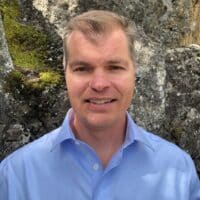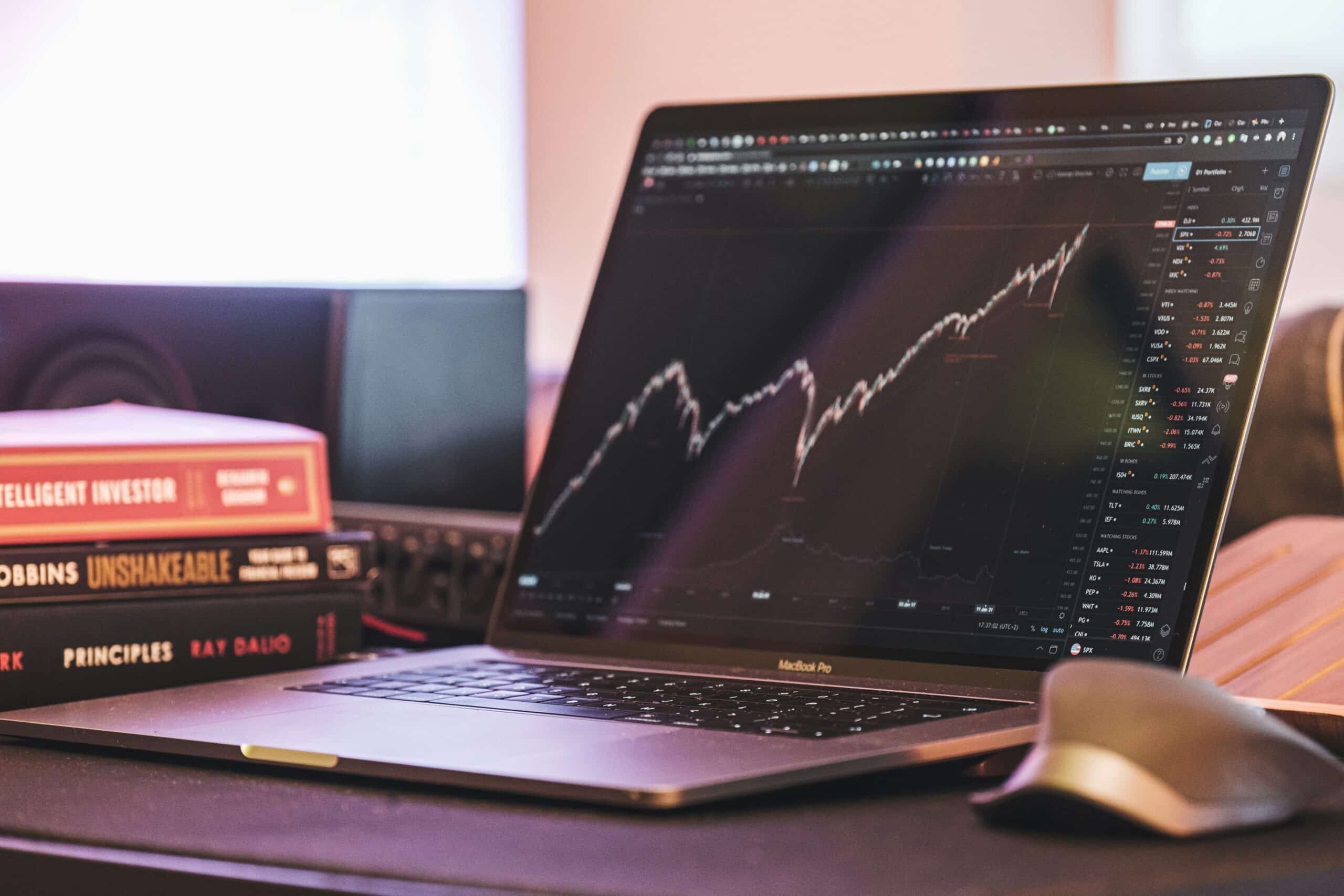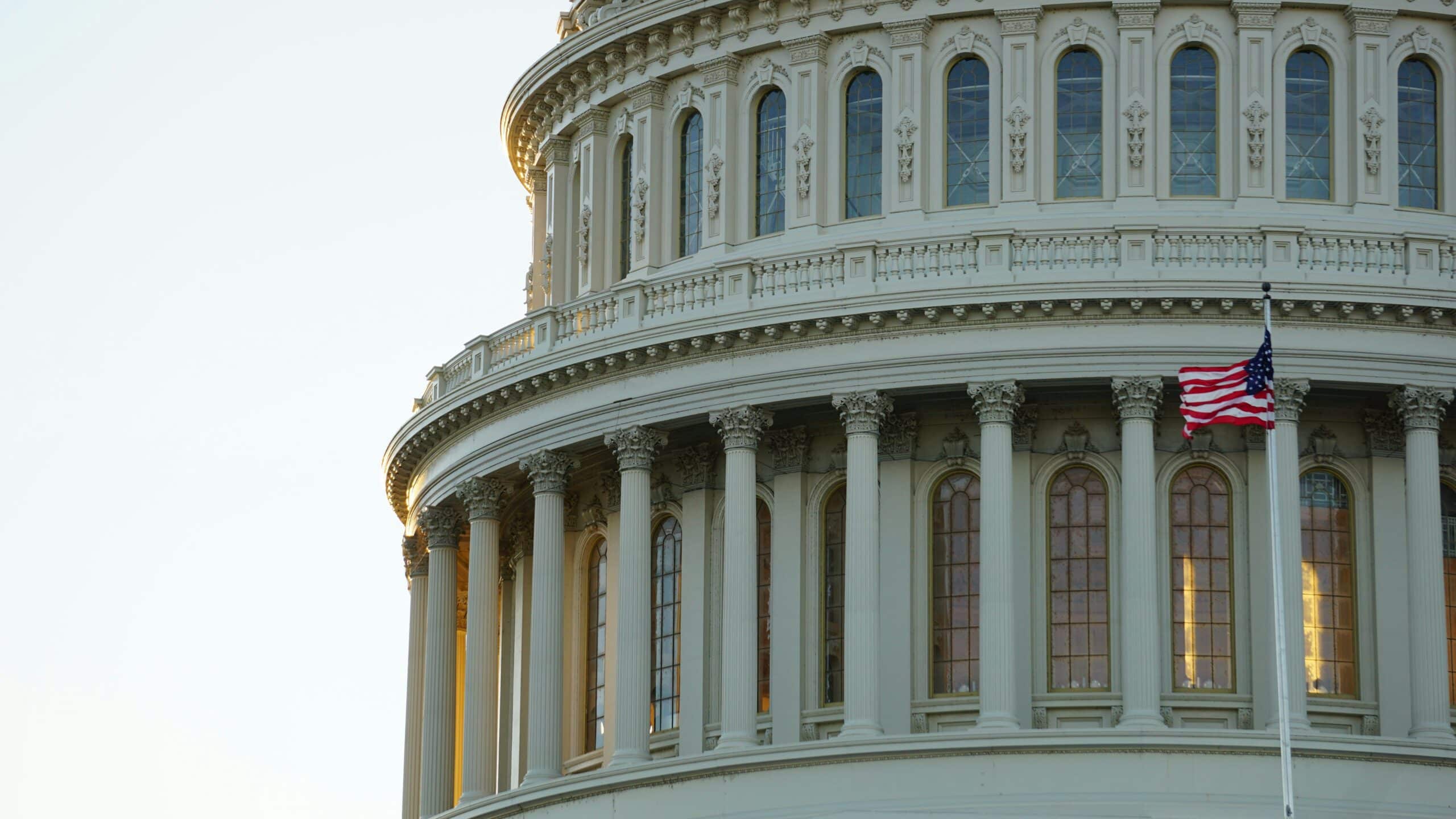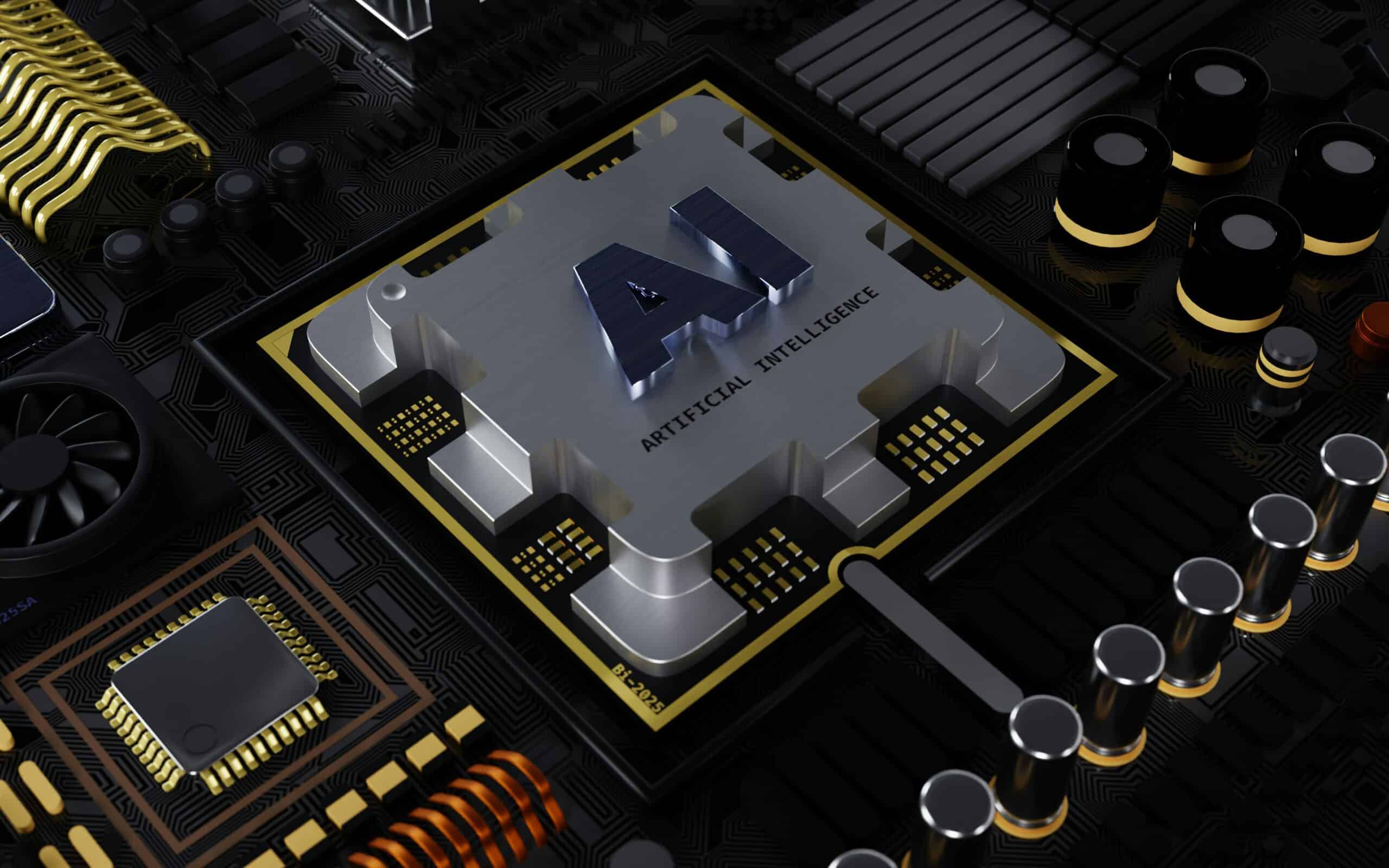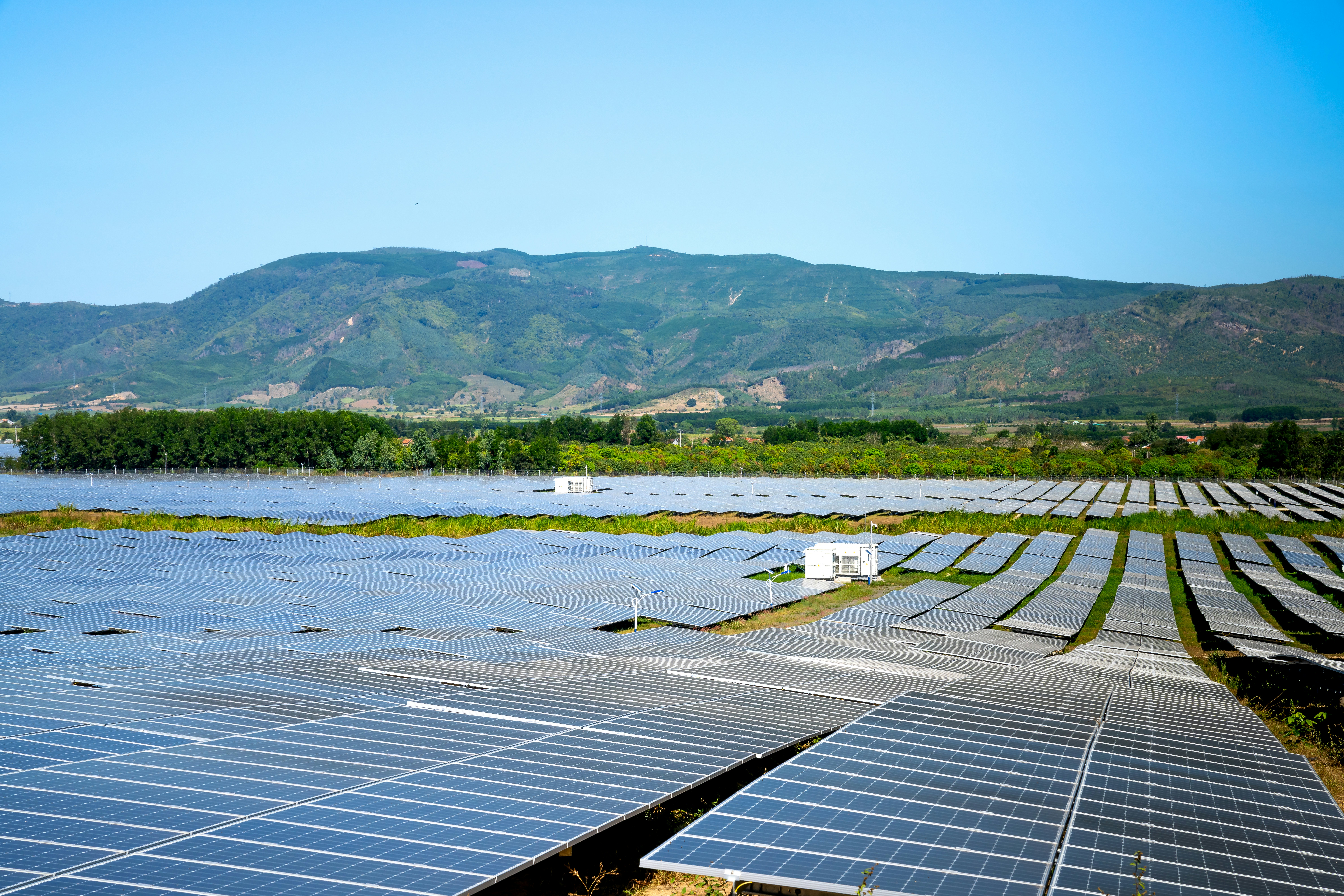POSTED
December 22, 2022
Investing in Solar Development with Shasta Power – Alt-reports interview
Brecht (00:00): Welcome back everybody to an episode, another episode of AltReports Radio, where I’m here with John Copyak is good friend of mine and a local Bend resident. And today we’re going to talk about investing in solar. John has, I think, a pretty interesting sort of creative real estate background before he got […]
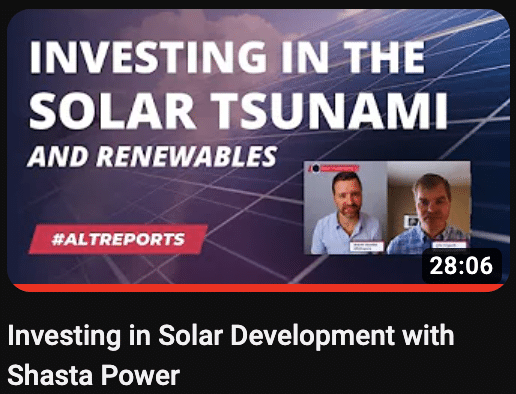
Brecht (00:00): Welcome back everybody to an episode, another episode of AltReports Radio, where I’m here with John Copyak is good friend of mine and a local Bend resident. And today we’re going to talk about investing in solar. John has, I think, a pretty interesting sort of creative real estate background before he got into what he’s doing now, and I’ll let him tell you about that. But he is at the forefront in my mind of what’s happening in our transition for energy and he’s leading the way in solar investments. And so we want to talk about that. John, thanks for being here today. Really appreciate you jumping on AltReports radio.
John (00:46): Thank you, Brecht. I really appreciate the invitation and looking forward to talking with you here. So where should we start with the history of real estate?
Brecht (00:56): So yeah, why don’t we talk about… You’ve done some pretty cool stuff, tax liens and seller financing and all that kind of… Can you talk a little bit about that because we’ve got a big real estate crowd on here and I know they’d love to hear about it.
John (01:15): Sure. So 20 years ago I started a business that purchased tax liens all over Central and Southern California. And the idea there was basically buy cheap land. A lot of it was out in the desert of California because that was cheaper than along the coast and more available, and then resell it largely on terms. So the idea was buy a lot for 10K, sell it on terms for 25K and do that over and over and over. And I did that hundreds of times and that went largely very well, especially in the early 2000s. And then along came 2007, and so that was a very scary time because the price of the auctions was over retail and then the price that you could sell them again was really pitiful.
(02:06) All investors were kind of out, but there was a shining glimmer of hope there, and that is renewable energy. I bought a number of properties that happened to be inside enormous wind and solar farms, and the developers of those farms immediately leased those properties that I had and they asked me, “Hey, do you have any more that you could lease to us?” And so I started specializing in renewable energy real estate. The idea was buy land and tax sales and immediately lease it or sometimes option it to some of the biggest wind and solar farms in California.
Brecht (02:48): So let’s break that down just in case we’ve got folks who are not initiated there. So a tax lien. How does a tax lien work there in California what’s that mean, what did you-
John (03:00): Sure. So every county in California sells land and sometimes houses that folks don’t pay their taxes on for at least seven years. If you have a house and you never pay your taxes about seven years in the county will foreclose on your property and then sell it to the highest bidder. And these are cash auctions. And a number of them are online now. Most are online in California, some small areas you can still go on a particular day once or twice a year and raise the paddle and buy real estate for cash.
Brecht (03:40): So you’re doing that, you’re buying these, then you’re selling them and holding the paper and so you’re getting… Is that right? Okay.
John (03:47): Yeah, that was the strategy.
Brecht (03:51): All right. And then we’ve got the financial, the GFC happens and I think anybody who is in real estate at that time knows that we hear you on what that was like. I was in the thick of it too. And so how do you end up with… Did you just start reaching out to solar? Because you and I have talked a number of times over dinner and whatnot, and you have a handle on the grid. You understand where the stations are and all that kind of stuff. How did you find all this out? Just tell us a little bit more about your transition there into the solar, because that seems like figuring out how to get power companies to option your land from you, sounds pretty far out I think for most real estate investors.
John (04:49): Sure. Well, it was a full-time job to figure out who was developing in California and what land they wanted to use. And so some of the biggest companies, they would determine maybe a five square mile area and say, “This is going to be our footprint.” And then they would hire consultants to go out and lease or purchase all of the land in those areas. And California happen to be sub-divided, sometimes down to two and a half acres. So there are solar and wind projects that have hundreds of parcels in them. And so once I got to know these consultants, they were happy to have someone that would go do the legwork of weeding out all of the holdouts and then offering the properties back to them to lease on usually 35 year leases.
Brecht (05:41): So you’ve got this big expands of land and all these tiny little lots and you’re just kind of pulling them all… Your work is pulling them all together. So it’s all almost like arbitrage on. Yes. Okay. Got it.
John (05:54): Right. And big companies want to move in big strokes. They don’t want some to buy, some on options, some on leases. They would prefer to just lease a whole area and do it all in a certain window of time, maybe six months or a year. And so cooperating with them was very helpful I think, because they would tell me which parcels that they wanted to use and then I would go after those properties, buy them out. A lot of owners were either up in age where they weren’t interested in 30 years of payments or they just didn’t believe that solar and wind was really viable. But now that there are days that California runs entirely on renewables, I think it is proof. And then you have 33 states that have renewable mandates. In Oregon here we have a mandate that the state has to be 100% renewable by 2040.
Brecht (06:53): Wow.
John (06:54): Same goes for California. That has to be 100% renewable by 2045 and 50% renewable by 20… Sorry. California 50% by 2025 and 100% by 2040. Anyway, most states have these types of mandates now, and so there is a very strong push within most states to become renewable.
Brecht (07:21): So in those early days, so you go and you put this land together and you’re leasing it to… You start leasing it. What did those… And is that when you decided you’d open a fund you needed some more capital to, and you began a raise or tell us about that?
John (07:41): Sure, so I started buying properties in wind and solar farms and leasing them out. And that went great. And pretty soon I ran out of money and I talked to all my friends and neighbors and I started a fund to do exactly that. And so I started a fund, collect money for a couple of years, buy as many properties as we could, and then close the fund so that those investors knew exactly what the projections are for all of the parcels that we bought. And over a series of about 10 years, I started five funds and they’re still operating. And so we have dozens of wind and solar parcels in some of the biggest wind and solar farms in California.
Brecht (08:26): Wow. So how much? What are we talking about? What have you raised over the years?
John (08:32): About $10 million and it’s all from accredited investors with an average of $100,000 investments.
Brecht (08:42): And so are you at a place in these funds where you’re able to start to get some sense of returns for that?
John (08:52): Absolutely. So it varies quite widely, but it’s about a 10% return year over year, over a 35 year period. And it comes with the, what would you call it? A little bit of the ideal that what we’re doing is we’re changing the grid across the United States, and so this isn’t oil money or what have you. This is improving the air and sometimes water for our children and grandchildren. So while those returns are good, over time, I noticed the developers are making quite a bit more money than the folks leasing land for these projects. And that brings us a little bit more up to date in that we started a company called Shasta Power, and within that company I do the real estate work primarily. And we develop our own solar farms using private equity.
(09:57) And then we have payouts over a four year period. As we get the land, we do the environmental work, we hire out a lot of the legal and a lot of the permitting, and then we end up selling the properties or selling the solar farms once they are ready to build or what we call notice to proceed, the date that they become shovel ready.
Brecht (10:30): So you do all the initial work of identifying where these should be, getting them permitted and everything legal, and then who’s buying them from you?
John (10:44): Sure.
Brecht (10:44): Or are they leasing?
John (10:46): So there are a number of them. No, they’re purchasing them. We end up buying, or we end up leasing the property or buying it on option. So it’s either a 35 or 40 year lease or it’s an option to buy in five years, and that keeps our risk down. But we’ve studied hundreds of areas across the country that would be good for solar. We look at a radiance, connectivity to the grid, terrain, the landowners who’s interested, who’s not, prices. We’ve filtered out hundreds of locations and we’ve boiled this series down to six solar farms that we’re currently developing.
Brecht (11:31): And where might-
John (11:34): Sure, one of them is right here in our state of Oregon. We have a small one in Illinois, and then we have five more across Oklahoma and Kansas. And our history is in California, or at least my history from wind and solar farms. And a few years ago we leased up about 1500 acres for a solar farm north of Los Angeles, and we raised about two and a half million dollars for that solar farm. And then we sold the solar farm to a much bigger developer. I can’t share the exact number, but it’s for multiples on our money on that sale.
Brecht (12:20): Okay, nice.
John (12:21): And the sales do… Yeah, we were very excited.
Brecht (12:25): Was that when you decided, okay, we’re going to stop holding these long term and we’re going to flip these, for lack of a better word to folks?
John (12:35): Well, it’s very expensive to build some of the solar farms. For example, 100 megawatt farm, which would power 50,000 houses that costs maybe 200 million to build. And we just didn’t expect to raise that kind of money or to have enough credit for that. So our realm was more in the 5 to $10 million range. And so the idea is if we raise $10 million and we kick off six solar farms, we could sell each of them for multiples on that money and then return a very healthy profit to investors.
Brecht (13:21): In a much shorter timeframe than-
John (13:25): Yeah, exactly. So we’re able to get our capital return in 12 to 18 months and then pay a multiple on the money in two to three years.
Brecht (13:36): Wow. So let’s talk a little bit about… I mean, this sounds great. You have the end buyer is a big well-funded corporation, and we’ve got this push in the country finally for more green, more renewable energies. They’re risks out there that you can see.
John (14:02): Absolutely.
Brecht (14:02): Because as we look at the rest of the market, there’s a lot of struggles out there. So are there headwinds that you’re concerned about or regulations?
John (14:14): Absolutely. Well, politics is probably the toughest risk to navigate. You never know what Congress will decide what to do. Recently they passed the Inflation Reduction Act, which-
Brecht (14:32): Won’t actually reduce inflation.
John (14:35): Well, I’m no economist, I can’t speak to that. What it did do is it extended our tax credit. We have a 30% in investment tax credit that has come and gone over the last 20 years and it’s been extended for many years. So that’s very helpful. If we build a site for $100 million dollars, there’s a $30 million tax credit.
Brecht (14:59): Where does that tax credit? What does it apply to? Who’s that for?
John (15:03): It applies to wind energy, to solar energy. It applies to private residences if you decide to put solar in your house or community solar projects or big utility grade solar projects like we’re developing. Yes. So it’s super helpful. So where were we?
Brecht (15:22): You’re talking about risks.
John (15:24): We’re developing six… Oh yeah, risks. Excuse me. So some of the risks that we’ve encountered are we get really excited about a site, we get several landowners interested, and then maybe one that’s key decides not to go with us, or they decide, “Hey, we want to keep farming this property. We don’t want it to be solar after all.” Or maybe there’s a squabble in the family or something like that. And we’ve had a couple of those failures and those have added up to maybe a $20,000 loss. And so it’s disappointing if we do the title work and site visits and legal leases and everything, but our gains can be so much bigger.
(16:12) Like I said, if we have maybe a $1 million capital invested in a solar farm, we can sell that when it becomes buildable for multiples on that million dollars. And so the gains are much larger than the losses. We might be able to select for first several million dollars. And if you want to talk with me privately, I could get a little bit more clear on what these multiples are, but it’s definitely in multiples and a failure might be $20,000. And so the gains drastically outweigh the losses that we have incurred.
Brecht (16:58): For sure.
John (16:59): And another thing to keep in mind is when we have a queue position at a utility, which is basically a reservation to sell power and connect at a particular location, we entered one for $400,000, which is a huge chunk, but that’s refundable if the project were to be stopped. Less, any cost that the utility incurs. But generally that’s refundable. So most of the investments that we make are refundable or they’re just small enough to stomach. If we spend 10,000 on Tyler reports and maybe 10 or 20,000 on some early leases or options that’s at risk. But the large utility reservations, those are refundable. So the risk is very much mitigated.
Brecht (17:55): Okay. And so are you raising now, is your fund open?
John (18:02): Yes, it is. So it’s accredited investors only. It is open. We have raised approximately $3 million now, and our aim is to raise a total of 10 million over the next year. So pay an interest rate on the funds. And we have a profit sharing of 60/40, 60% to investors for getting involved. And our intention is to start selling the projects next summer, and then we’ll sell them all over the next two years. And so we’ll see a large capital next year and then complete capital return in 2024 and start the profit sharing process in ’24 and ’25. And we hope to be finished in four years, but it remains to be seen, but at least we’ll have a capital returned very quickly.
Brecht (19:01): So you already have projects underway in this fund?
John (19:06): That’s right. We have six projects underway, and they’re in different stages. A couple of them, we have land control. One we have a large queue position. One we’ve petered out. We were hoping to make it large, 200 acres. We only got 50 acres. And so since that was two small for us, we sold it for several multiples on our money and we wanted to focus on our bigger sites. So we do have six projects going currently. And some folks have asked, “If you don’t raise the full 10 million, what happens?” And the answer is, we’ll sell some of our sites prematurely for maybe 100% gain instead of several multiples. But our hope is to bring these all to buildable and then sell them at that time when they can be the most profitable.
Brecht (20:06): So a lot of times when we hear about funds, we hear things like 2 and 20. And it sounds like you’re doing, you’re, you’ve got a completely different model than that. Tell me a little bit about that. You mentioned you’re paying interest in the intern, but it’s not a debt fund, is it? Or is it a debt fund?
John (20:24): No, there’s no debt at all. It is all private equity. And so how it works, there’s the management. There’s three managers. I’m one of them, and we charge a 6% annual fee on capital raised, and we also pay an interest rate. Currently, we’re paying a 7% rate to investors. And then, once the capital is returned, both of those go away. We no longer earn the 6% management fee and the interest to investors is gone. But then we share profit 60/40, 60% to investors.
Brecht (21:05): Okay. Got it. Cool. Yeah, that’s a different arrangement than you hear about most of the time. How did you come up with that?
John (21:15): It’s totally different.
Brecht (21:16): And what is the purpose of that?
John (21:20): Sure. Great question. Well, we needed some money for all of the work that we’re doing. So we had to charge a management fee. To develop six sites simultaneously is a huge lift. And so we needed to have some income there. We also wanted a carrot for investors to invest now instead of being the very last investor next year sometime. And so we decided to pay early investors a 10% rate, and that dwindles as the fund grows, and the risk goes down. So we are paying the earliest investors 10%, but now that we’ve got six projects moving forward, we’re paying 7. As our risk and our size progresses, we’re going to pay all the way down to zero on the rate just because we don’t need the money as badly at the end.
(22:25) And so that’s how we came up with this. The rates and the 60/40 we thought was very fair in that we pay the rate first and then we pay capital back to investors, and then the income is shared 60/40. And if you were to see the numbers on these, I say that we’re selling the sites for multiples, on our money, the income to investors is very high, and the risk goes down substantially after we return capital next year in 2024.
Brecht (23:06): So if you had to characterize this as low middle art or high risk, how do you feel about…
John (23:13): Well, that’s a great question. So our experience is we had a big solar farm sale in California and it went very well. And so we’ve added 100 there, but we do expect a failure here and there. We’ve had some early failures where we poured in maybe 20,000 to a site and had to abandon it, and that was tolerable with a $10 million fund. But we only need one site to be successful for the entire fund to be profitable. Of course, we want all six to work out. So I would say each site has an 80% chance of success, especially once they get going. And so sure out of six, there’s likely that one, maybe two would fail. But even with that ratio, investors will still make multiples on their money over the four year period. So yes, there will be some failures. It is, like I say, there’s political risk, there’s risks of competition.
(24:24) There’s several risks, but they’re not fully weighted because when projects are just starting, that’s the riskiest. But we have very little on the table when they’re starting. Once they’re a year in, the risk goes down and our investment in them rises. But the biggest capital commitments are these queue positions and those are refundable. So like I say, that’s another reason we started six sites, so that if one or two fails, we can handle that. The chances of all of them failing is really low. And even if that happened, all of the queue positions would be refundable, so the majority of our capital would still be there.
Brecht (25:06): So you’re really only talking about potential loss, even if it was 30 or 50 per site, you’re still not talking about a tremendous loss relative to the size of the fund. It’s pretty small.
John (25:22): Exactly. Yeah. I mean, if none of the sites worked out, which would be really, really surprising, we might experience a 20% loss, but I think that there’s maybe a 1% chance of that. It’s possible that Congress changes their mind and every state changes their policies, and-
Brecht (25:45): I don’t see that happening.
John (25:46): … the world technically comes to end.
Brecht (25:50): Well, the world comes to and end, I’m not sure what you do with the cash anyway, right?
John (25:56): Yeah. I mean, there are political risks, but right now the Inflation Reduction Act is on our side and we have 33 states that have renewable mandates, so it’s very much an awesome time to invest in solar right now. We studied every major coal plant west of the Mississippi, and they all have solar farms being built in development right now. And so if you go in time three or four years and start driving around the desert, you will be amazed at how much solar is in development right now.
Brecht (26:34): Wow. Well, that’s pretty exciting and I appreciate you jumping on here and talking through that. I think that what part of my… And I’m not a financial planner. I’m not giving any financial advice, but part of my personal thesis you going forward is that renewables is a place to invest in. It’s a growth area, and we’re not going back the other way. Despite all the fighting and politically and everything else, we’re definitely doing this. And so it’s just a matter of what pace. And seems like you’re really positioned right there to be in the way of it, especially where you’ve got these two decades of background specifically in this space. So I think it’s pretty exciting. If folks want to talk with you, how can they find you?
John (27:23): Yeah, please visit shastapower.com. That’s the fund that’s open right now with all of the new developments in it. And so yeah, please visit shastapower.com and you’ll see me and my partner’s there, and we’re very active in the space and that’s the best way to reach us.
Brecht (27:43): Okay, great. Well, thanks John. Thanks for coming on talking about investing in solar and renewables today. I hope you’re here from some folks from the show, and that’s been great talking with you.
John (27:55): Thank you, Brecht. I really enjoyed talking with you. I’ve known you for a long time. And again, thank you for the opportunity. We’ll talk here soon.
Brecht (28:04): My pleasure to have you.


